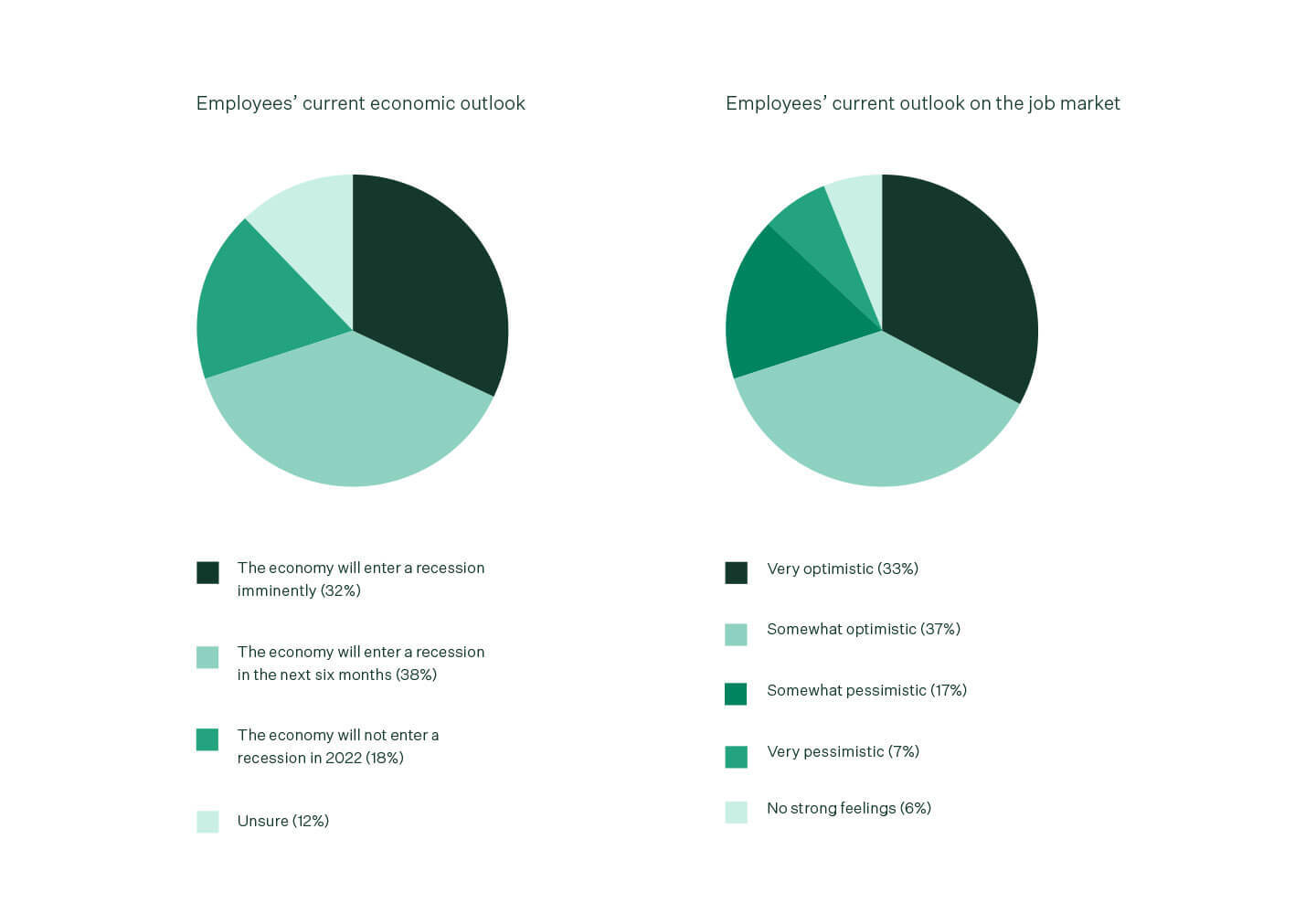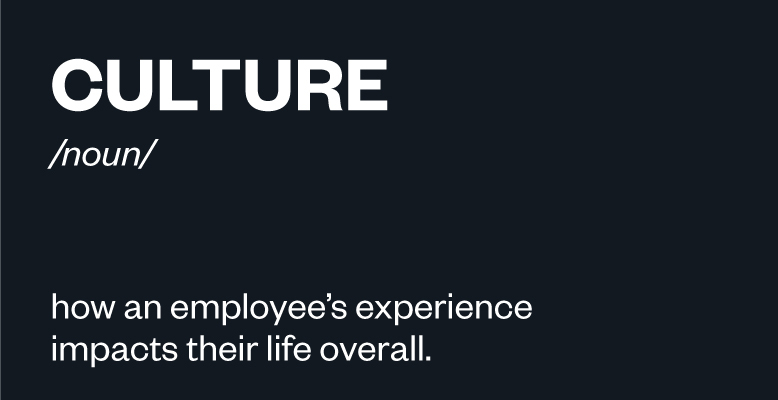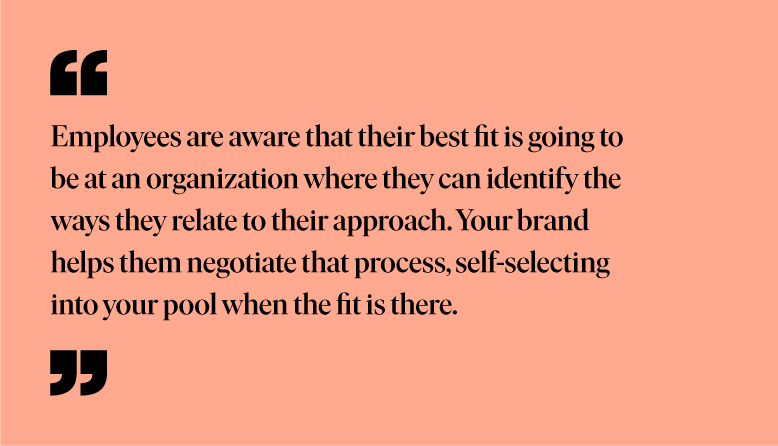Is Your Retention Problem Actually a Branding Problem?
It’s safe to say that today’s job market has shifted tremendously in the past year. With six figure layoff numbers in the tech space alone, it’s no wonder that many companies have started to shift their focus away from recruitment. However, when thinking about new priorities in this climate, there’s one that should be at the top of everyone’s mind: employee retention.
Despite the current economic headwinds, many employees are still considering whether their current employer is the right choice for them. In fact, according to a survey conducted by Greenhouse, a hiring software provider, 57% of employees said that they plan to still be actively looking for a new job even if a recession hits (Greenhouse).

In order to engage your employees today, and potentially new recruits tomorrow, you need to spend time and resources thinking about your employer brand.
Easier said than done right?
Let’s examine some of the details around employer branding: what it is, how to recognize a good one, and the steps you can take to start evolving yours right now.
The expectations have changed
In the wake of the tech boom of the early 2000’s, businesses seeking talent often focused on perks like free food in the office, flexible workspaces, and yes, the infamous ping-pong tables.
In the following years we witnessed a shift in employees’ choices, with talent gravitating to businesses that aligned with their own ethics and ambitions instead. The focus was moved from questions like “What’s waiting for me today?” to “What do we believe in?”
Today, the employee experience isn’t defined totally by tangible benefits or philosophical purposes, but rather a mixed idea that we call culture.
However, it’s important to clarify what we mean by culture. We’re not talking about whether or not your office avoids toxic behavior or if you’re embracing DEI initiatives. At this stage, those are table stakes for attracting talent.
What we focus on when we think about culture is how an employee’s experience impacts their life overall. How do professionals at your company find fulfillment? What is the aspect of their job getting them out of bed in the morning? What makes your approach unique? In short, “Why should I choose to work here?”
These are the questions that recruits are looking to answer in their job hunt, and the questions that employees are constantly re-evaluating to see if they’re still a good fit.

What does a good employer brand for employee retention look like?
When it comes to evaluating an employer brand, we recommend asking three critical questions:
Is it unique?
Companies often believe that in order to compete, they need to match the feeling of their industry or their peers. But this only takes away the opportunity to present prospects with a unique value proposition. Ideally, your brand communicates a culture that feels distinct. After all, how can you expect employees to choose your company over any other if the promised experience doesn’t feel different?
Does this support our overall value proposition?
Employees want to understand why their job matters. What’s the point in continually investing your time and energy into a task if you don’t understand what the outcome of that work is? By aligning the experience that you offer your employees with the value you provide to customers, you assure team members that their contributions have a real measurable impact.
Does it help talent self-select in and out of our pool?
You can’t be everything to everyone. It’s a major investment to recruit, hire, and train employees. And it can be a major loss to have those individuals quit 3 months later because their experience doesn’t meet their expectations. So it’s imperative that your employee value proposition conveys the reality of working at your firm. This may weed out a percentage of potential recruits. But the ones left will stand a much better chance of delivering long-term value.

How to get started
At first, reimagining your employer brand may seem like a monumental undertaking, but the key is not to overcomplicate the process and to set concrete parameters around your discovery process. Let’s start with a few tips.
You don’t have to boil the ocean
There’s always a temptation in discovery to go as wide as possible, but we recommend starting small with a manageable sample size of interviews with people from across your organization.
For example, when we partnered with Wolters Kluwer to help build an employee value proposition, we started by gathering a diverse set of 25 stakeholders from various segments, levels, tenure, and departments across the company. Each one brought their own experiences and expertise to the table and in one day we were able to distill their thoughts into 4 guiding tenets that made up the foundation for a new EVP.
Have a plan (or use ours)
Start by considering the various voices you want to hear from, the best ways to engage them in the process, and what you want to walk away with. Here are some ideas to use as inspiration for your process.
Who to talk to
Recent Hires: These individuals just made the choice to join you. Try to understand why.
Tenured Employees: It’s a chance to discover what gives your brand staying power and how it’s impacted the careers of your team.
Senior Leadership: Take in their experience and consider how your future growth and trajectory factors into your plan.
External Recruiters: These professionals are uniquely aware of how your value proposition stacks up against competitors.
What to talk about
Sample Discussion Guide:
- What’s our superpower?
- When did you know you wanted to work here?
- What didn’t resonate with you?
- What made our company the best choice for you?
- What impact did you feel you could make?
- What would you tell someone interviewing to get them interested in working here?
- What is different about this company versus others you’ve worked at? The leadership? The mission? The culture? The people? The opportunities? The approach? The product?
- What attributes do successful employees have in common?
- Was what was communicated to you different than what you experienced?
- Why have you stayed?
Conclusion
Your brand perception as an employer is critical to your ability to both recruit and retain the employees who fuel your business—especially in a weak job market. Employees are constantly questioning if remaining with their company is the right decision for their careers and their everyday lives. Convincing them to stay requires a strong internal culture and clear communications that convey why their work matters in the context of their contributions and their careers. You can engage your organization immediately to start defining and articulating what makes your employee experience unique and valuable. Once that’s complete, you’ll be ready to infuse that message across the entire employee experience.
